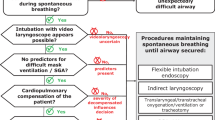Abstract
Purpose of Review
To summarize and critically review recent literature on spontaneous recovery from unilateral vocal fold paralysis (UVFP), with emphasis on the time to vocal recovery and its implications for the physiology of recurrent laryngeal nerve (RLN) injury and repair.
Recent Findings
Analyses of the time to spontaneous vocal recovery in UVFP have generated probabilities of recovery that can be used to counsel patients within the first 12 months of the onset of UVFP, replacing the traditional recommendation of waiting 12 months prior to pursuing permanent intervention. In addition, mathematical modeling of the recovery times has yielded insights into the physiology of RLN reinnervation following injury.
Summary
Most patients with UVFP who experience vocal recovery do so within 6–9 months. The recovery pattern differs between idiopathic UVFP and iatrogenic UVFP. For iatrogenic UVFP, the severity of RLN injury dictates the time to recovery and the eventual probability of recovery, not the distance between the injury site and the larynx.

Similar content being viewed by others
References
Papers of particular interest, published recently, have been highlighted as: • Of importance •• Of major importance
Sulica L. The natural history of idiopathic unilateral vocal fold paralysis: evidence and problems. Laryngoscope. 2008;118(7):1303–7. https://doi.org/10.1097/MLG.0b013e31816f27ee.
Paniello RC. Synkinesis following recurrent laryngeal nerve injury: a computer simulation. Laryngoscope. 2016;126(7):1600–5. https://doi.org/10.1002/lary.25730.
Pei YC, Chang WH, Chuang HF, Chang CF, Fang TJ. Implications of synkinesis in unilateral vocal fold paralysis. Otolaryngol Head Neck Surg. 2017;157(6):1017–24. https://doi.org/10.1177/0194599817721688.
Lin RJ, Munin MC, Rosen CA, Smith LJ. Effect of intralaryngeal muscle synkinesis on perception of voice handicap in patients with unilateral vocal fold paralysis. Laryngoscope. 2017;127(7):1628–32. https://doi.org/10.1002/lary.26390.
Rickert SM, Childs LF, Carey BT, Murry T, Sulica L. Laryngeal electromyography for prognosis of vocal fold palsy: a meta-analysis. Laryngoscope. 2012;122(1):158–61. https://doi.org/10.1002/lary.22354.
Munin MC, Heman-Ackah YD, Rosen CA, Sulica L, Maronian N, Mandel S, et al. Consensus statement: using laryngeal electromyography for the diagnosis and treatment of vocal cord paralysis. Muscle Nerve. 2016;53(6):850–5. https://doi.org/10.1002/mus.25090.
Sittel C, Stennert E, Thumfart WF, Dapunt U, Eckel HE. Prognostic value of laryngeal electromyography in vocal fold paralysis. Arch Otolaryngol Head Neck Surg. 2001;127(2):155–60. https://doi.org/10.1001/archotol.127.2.155.
Munin MC, Rosen CA, Zullo T. Utility of laryngeal electromyography in predicting recovery after vocal fold paralysis. Arch Phys Med Rehabil. 2003;84(8):1150–3. https://doi.org/10.1016/s0003-9993(03)00146-1.
Paniello RC, Park AM, Bhatt NK, Al-Lozi M. Recurrent laryngeal nerve recovery patterns assessed by serial electromyography. Laryngoscope. 2016;126(3):651-656. doi:10.1002/lary.25487. These canine experiments with controlled RLN injuries disprove the concept that recovery times are dependent on the distance from injury site to the larynx.
Sulica L, Blitzer A. Decision points in the management of vocal fold paralysis. In: Sulica L, Blitzer A, editors. Vocal Fold Paralysis. Berlin: Springer; 2006.
Mau T, Pan HM, Childs LF. The natural history of recoverable vocal fold paralysis: Implications for kinetics of reinnervation. Laryngoscope. 2017;127(11):2585–90. https://doi.org/10.1002/lary.26734This paper describes the mathematical modeling of time-to-recovery data and puts forth the concept that the severity of RLN injury, not the distance between injury site and the larynx, is rate-limiting in recovery. It also replaces the 12-month-rule with a probability distribution that can be used for patient counseling.
Husain S, Sadoughi B, Mor N, Levin AM, Sulica L. Time course of recovery of idiopathic vocal fold paralysis. Laryngoscope. 2018;128(1):148–52. https://doi.org/10.1002/lary.26762This paper provides data that can be used to counsel patients about their prognosis for spontaneous vocal recovery.
Husain S, Sadoughi B, Mor N, Sulica L. Time course of recovery of iatrogenic vocal fold paralysis. Laryngoscope. 2019;129(5):1159–63. https://doi.org/10.1002/lary.27572This paper provides data that can be used to counsel patients about their prognosis for spontaneous vocal recovery.
Mau T, Husain S, Sulica L. Pathophysiology of iatrogenic and idiopathic vocal fold paralysis may be distinct. Laryngoscope. 2020;130(6):1520–4. https://doi.org/10.1002/lary.28281.
Pei YC, Li HY, Chen CL, Wong AMK, Huang PC, Fang TJ. Disease characteristics and electromyographic findings of nonsurgery-related unilateral vocal fold paralysis. Laryngoscope. 2017;127(6):1381–7. https://doi.org/10.1002/lary.26329.
Tracy LF, Kwak PE, Bayan SL, Van Stan JH, Burns JA. Vocal fold motion recovery in patients with iatrogenic unilateral immobility: cervical versus thoracic injury. Ann Otol Rhinol Laryngol. 2019;128(1):44–9. https://doi.org/10.1177/0003489418808306.
Lee DH, Lee SY, Lee M, Seok J, Park SJ, Jin YJ, et al. Natural Course Of Unilateral Vocal Fold Paralysis And Optimal Timing Of Permanent Treatment. JAMA Otolaryngol Head Neck Surg. 2020;146(1):30–5. https://doi.org/10.1001/jamaoto.2019.3072.
Author information
Authors and Affiliations
Corresponding author
Ethics declarations
Conflict of Interest
The author declares no competing interests.
Human and Animal Rights and Informed Consent
The studies relevant to this review that were performed by the author have been approved by the UT Southwestern Institution Review Board and have been performed in accordance with the ethical standards as laid down in the 1964 Declaration of Helsinki and its later amendments or comparable ethical standards.
Additional information
Publisher’s Note
Springer Nature remains neutral with regard to jurisdictional claims in published maps and institutional affiliations.
This article is part of the Topical collection on LARYNGOLOGY: Management of Vocal Cord Paralysis
Rights and permissions
About this article
Cite this article
Mau, T. Understanding Risk and Recovery in Vocal Fold Paralysis. Curr Otorhinolaryngol Rep 9, 95–100 (2021). https://doi.org/10.1007/s40136-021-00333-x
Accepted:
Published:
Issue Date:
DOI: https://doi.org/10.1007/s40136-021-00333-x




